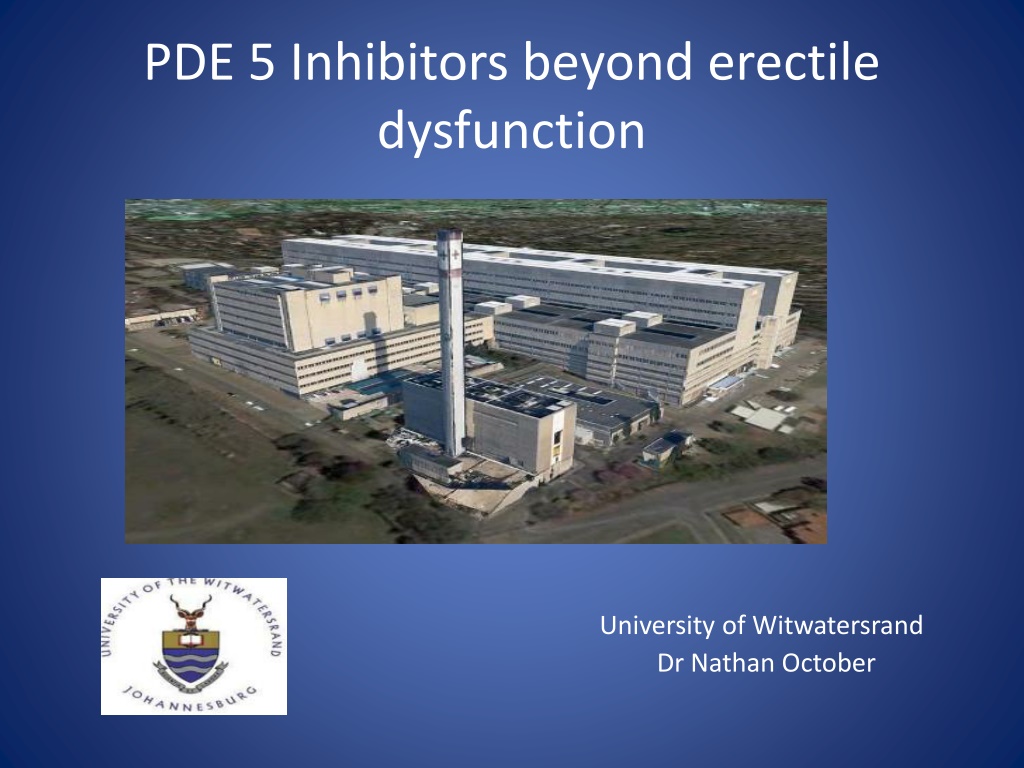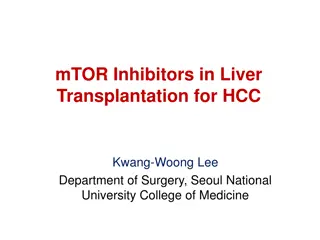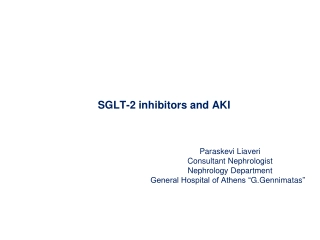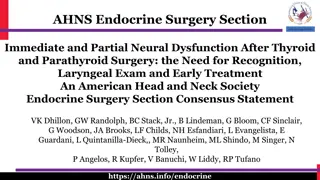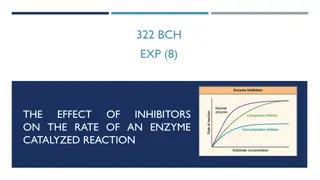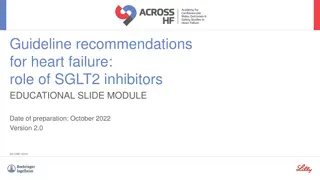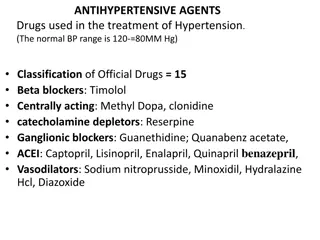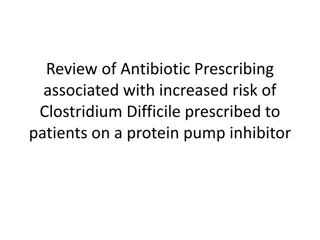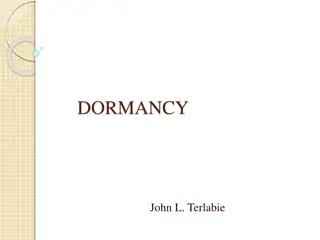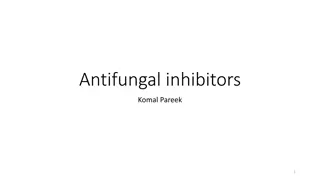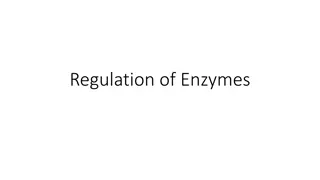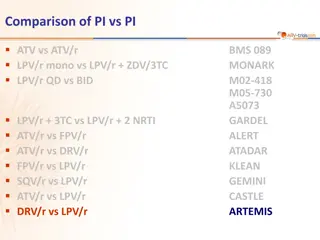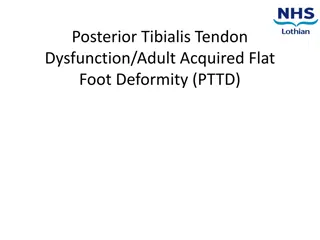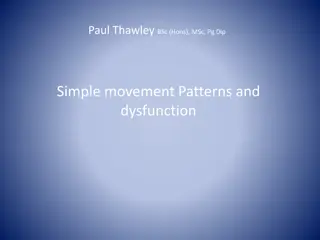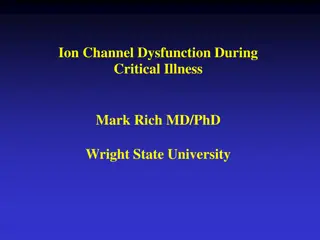Exploring the Diverse Applications of PDE-5 Inhibitors Beyond Erectile Dysfunction
Discover how PDE-5 inhibitors go beyond treating erectile dysfunction, with approved and emerging compounds, alternative dose regimens, concentration sites, and potential targets like cardiovascular diseases and the central nervous system.
Download Presentation

Please find below an Image/Link to download the presentation.
The content on the website is provided AS IS for your information and personal use only. It may not be sold, licensed, or shared on other websites without obtaining consent from the author. Download presentation by click this link. If you encounter any issues during the download, it is possible that the publisher has removed the file from their server.
E N D
Presentation Transcript
PDE 5 Inhibitors beyond erectile dysfunction University of Witwatersrand Dr Nathan October
Approved and emerging PDE 5 inhibitors Compound Company Sildenafil Pfizer Vardenafil Bayer AG Tadalafil Eli Lilly Udenafil Dong Pharmaceutical Co Ltd Avanafil Tanabe Seiyaku, licence by Vivus SLX-2101 Surface logics
Is there any other application for the PDE 5 inhibitors?
Concentration sites of PDE- 5 Corpora Cavernosum Bladder Prostate Smooth muscle of systemic vasculature Cardiac tissue Brain Platelets
PDE 5 inhibitors It s relatively safe and efficient Agents are selective (Sildenafil and vardenafil cross react slightly with PDE-6 and tadalafil with PDE-11)
ALTERNATIVE DOSE REGIMEN On demand versus daily PDE 5 inhibitors
Daily PDE 5 inhibitors in Erectile dysfunction Multiple studies improved outcome > Patients with poor response to on demand PDE 5 inhibitors > Diabetic patients > Post radical prostatectomy patients Triggered multiple attempts to find alternative applications for your PDE 5 inhibitors
FDA approved it for the treatment of Erectile dysfunction and Pulmonary Hypertension The other possible targets are still experimental
Possible targets Non-urological Cardiovascular diseases Central nervous system Urological Lower urinary tract symptoms Priapism Premature ejaculation Overactive bladder Female sexual arousal dysfunction Peyronie s disease
Cardiovascular diseases Endothelial dysfunction Erectile dysfunction is a vascular disorder in most cases Endothelial dysfunction initial step in artherosclerosis of the penile vasculature and systemic vasculature
Causes of endothelial dysfunction Hypertension Smoking Diabetes Mellitus Dyslipidemia Smoking
Endothelial dysfunction Reduction in the bioavailability of vasodilators Shift towards vasoconstriction Leads to impairment of endothelial dependant vasodilatation
Endothelial dysfuntion cont Conclusions Onset of sexual dysfunction is a marker of subclinical vascular disease Predictor of future cardiovascular event Early recognition and treatment of endothelial dysfunction may prevent future ischaemic heart disease PDE 5 inhibitors as a therapeutic tool in endothelial dysfunction ?
Markers of endothelial dysfunction Early intervention Decrease the risk of a cardiovascular event
Clinical Indicators of Endothelial dysfunction Integrity of the endothelium Circulating markers and Brachial artery mediated dilatation
Endothelial dysfunction cont Circulating markers Indicates the integrity of the endothelium Activated endothelial cells indicates early development of artherosclerosis Namely : ADAM (Assymmetric dimethyl arginine) hsCRP (High sensitivity c reactive protein) Evidence that ADAM decrease the production of NO (Thum T et al, 2005) Exact pathological role of hsCRP unknown hsCRP prognostic value for future cardiovascular events (Bassuk et al,2004)
Studies PDE 5 inhibitor treatment have shown a decreased infarct size after ischemia-reperfusion injury in animal models Chronic PDE 5 inhibitors increases endothelium dependant flow and improve endothelium function in patients at risk for myocardial injury (Foresta et al,2006)
Endothelial dysfunction is an early marker for atherosclerosis (Bocchio et al,2004) Endothelial dysfunction patient had a two field increase in the risk of acute myocardial infarction compared to non-endothelial dysfunction patients (Blumentals et al,2005) Cardio protective role is unclear ?
Cardiovascular & Endothelial Pulmonary Hypertension
Animal models : PDE 5 (Sildenafil) reduces pulmonary arterial pressure and right heart hypertrophy Clinical study SUPER 1 (Sildenafil use in pulmonary hypertension), multinational randomized controlled trial Results - well tolerated , improved exercise capacity and haemodynamic parameters Improving the cardiac output by decreasing the pulmonary arterial pressure Approved by FDA in 2005 for treatment of PAH
Congestive heart failure Vasoconstriction is a pathophysiological hallmark of congestive heart failure Hypothesis PDE 5 inhibitors causes vasodilation most prominently in the pulmonary vasculature Increase the compliance of the larger vessels Therefore decreasing the afterload, increases the cardiac output
STUDIES Anti proliferative factors Landmark experiment by (Takimoto et al,2005) in mice showed that chronic PDE 5 inhibitors prevent and reverse cardiac hypertrophy
Studies Patients c an ejection fraction of 35% a single dose of 50mg sildenafil improved cardiac performance by decreasing peripheral resistance (Hirata et al) Sildenafil-increased endothelium dependant, flow mediated vasodilation in patients in chronic heart failure (Katz et al, 2000) The effect of left ventricular function is unknown
Hypertension PDE 5 inhibitors due to it s vasodilatory effect are a possible treatment option for hypertension Studies PDE 5 Inhibitors decrease the BP average 9/8 mm Hg (systolic/diastole) (Jackson et al, 2005)
CVA Multiple studies in rats confirmed the neurogenic effect of PDE 5 inhibitors Treatment with Sildenafil for 7 days after an ischaemic event in the brain of rats Results increase endothelial proliferation and synaptogenesis, increase functional recovery in the rodents (Zhang et al) However in humans PDE 5 inhibitors due to it s vasodilatory effect are contraindicated in the first 6 months post stroke
Raynauds disease Increasing evidence that NO/cGMP plays an important role Open label pilot study investigated the effects of vardenafil on clinical symptoms in 40 patients c Raynaud phenomenon Doppler flow studies revealed increase in blood flow in 75% of the patients (Caglayan et al, 2006) Double blind placebo controlled trial ( Fries et al, 2005) showed decrease in frequency of the attacks and duration with capillary blood flow increasing in all the patients
Memory and Cognition PDE 5 inhibitors showed increase in the memory performance of rodents However the results in humans have only been studied sporadically Further trials required
Urological diseases Lower urinary tract symptoms Overactive bladder Premature ejaculation Female sexual dysfunction Priapism Peyronie s disease
LOWER URINARY TRACT SYMPTOMS PDE 5 inhibitors have shown to relax human prostate tissue in vitro Clinical trials - patient treated with 100mg Sildenafil or tadalafil 20 mg daily or placebo for 12 weeks IPSS was reduced with an average of 6.3 in the treatment group compared to 1.9 in the placebo group No change in the urodynamics of these patients (Mcvary.et al) Additional treatment option?
Priapism Stuttering priapism Hypothesis is that long term treatment c PDE 5 inhibitors may prevent the down regulation of PDE- 5 protein Therefore prevent the chronic cGMP accumulation and excessive blood flow in patients with priapism
Peyronies Disease Cyclic GMP has been found to be anti fibrotic in Peyronie s disease Long term treatment with PDE 5 inhibitors prevent plaque formation in rat models PDE 5 is expressed in tunical and Peyronie s disease fibroblasts (Valente et al,2005) Treatment option further human studies required
Female sexual dysfunction Increase blood flow in the clitoral cavernosum and vagina Hypothesis it may benefit women with female sexual dysfunction The results were not very encouraging Moderate effect in pre and post menopausal females (Caruso et al, 2006)
Overactive Bladders Mechanism of action Decrease the tone of the bladder (Sandner P et al) showed a decrease in the tone of the muscle strips of the male beagle dog between 70-20 %. Decreasing the frequency of urination and increases the volume of the bladder of conscious dogs
Premature Ejaculation Hypothesis Prolongs intravaginal ejaculation latency time Two theories: central and peripheral
Central NO/cGMP in the medial pre optic area of the brain causes erection and decrease central sympathetic output in the animal models Animal models Administration of PDE 5 inhibitors increase cGMP in the medial pre optic area (Sato et al,2007)
Peripheral NO/cGMP causes relaxation of corporal smooth muscle Relaxation of the smooth muscle of the vas deferens, seminal vesicles, prostate and urethra
Studies However no convincing evidence that on demand or daily PDE 5 inhibitors play a role in the treatment of premature ejaculation ( Atan et al,2006)) randomized control trial compared Placebo alone Sildenafil alone EMLA cream alone Sildenafil and EMLA cream Results Sildenafil was not more effective than the placebo EMLA cream alone was as effective as EMLA cream and Sildenafil
Conclusion Daily low dose PDE-5 inhibitors may play a role in certain disease processes Drawback is the costs involved Further multinational randomized control trials or prospective studies are required to define the exact role of PDE-5 Inhibitors
References Anthony J, Ling X et al. Daily administration of Phosphodiesterase type 5 inhibitors for urological and nonurological conditions, European urology (2007) 52, 990- 1005 P sander, J Hutter, H Tinel et al. PDE 5 inhibitors beyond erectile dysfunction, International journal of impotence research (2007) 19, 533-543 P Montsori, P Ravagnani, S Galli et al. The triad of Endothelial Dysfunction, Cardiovascular Disease and Erectile Dysfunction Clinical implications, European urology (2009) 8, 58-66 M Guazzi et al. Clinical use of phosphodiesterase inhibitors in CHF, Circulation heart failure (2008) 1, 272-280
